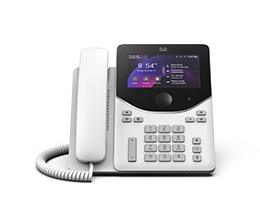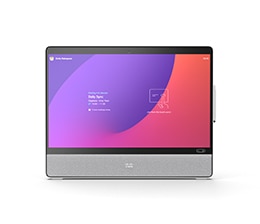Contact Center Definitions
Contact center and customer experience terms defined
The suite of modern tools and software solutions employed in call centers to enhance operational efficiency, customer experience, and agent performance.
Technology that provides real-time assistance to call center agents during customer interactions.
Quantitative measures used to evaluate the efficiency, effectiveness, and quality of service provided by call center agents.
Technologies that simulate human intelligence to automate responses and support decision-making.
The systematic analysis of data related to customer interactions, agent performance, and operational efficiency (in contact centers).
A set of protocols and tools for building software applications, allowing different systems to communicate with each other.
Customer service interactions where a human agent is involved in resolving the customer's issue or inquiry.
The process of determining which customer touchpoints or channels (e.g., email, social media, phone calls) contribute towards conversions or sales.
A system that automatically dials phone numbers from a list, connecting live calls to available agents.
The use of technology to provide customer support without human intervention.
Learn how Automatic Call Distribution (ACD) systems work, their various types, and how they can impact your contact center operations.
The use of artificial intelligence, machine learning, and other technologies to handle customer service tasks traditionally performed by human agents to enhance efficiency and customer experience.
A key performance metric in call centers that measures the average duration taken by an agent to handle a call or transaction.
Comparing business processes and performance metrics to industry bests and best practices from other companies.
Technology that uses unique biological traits, such as voice recognition, to authenticate a customer's identity.
A call center that handles both inbound and outbound calls.
Identifying potential risks to operations and creating systems and procedures to mitigate those risks, ensuring that the contact center can maintain service levels under various scenarios.
The practice of contracting a specific business task, such as customer service, technical support, or back-office functions, to a third-party service provider.
An AI Contact Center utilizes artificial intelligence technologies to enhance and automate its operations, providing a more efficient and personalized customer service experience.
The process of ensuring consistency and accuracy in the evaluation of customer interactions by agents.
A facility used by companies to manage customer interactions via various communication channels, including voice, email, chat, and social media.
Overseeing the operations of a call center, including staff management, technology implementation, strategy development, and ensuring the efficient handling of customer interactions.
Delegating customer support operations to a third-party service provider.
Software designed to support the operations of call centers, integrating functionalities such as telephony, call routing, interactive voice response (IVR), customer relationship management (CRM), and analytics to improve customer service and operational efficiency.
Comprehensive tools and services that address the specific needs of call centers.
A feature in call center telephony systems that places incoming calls in line to be answered by the next available agent.
The process of directing incoming calls to the most suitable agent or department in a contact center, based on predefined criteria such as caller needs or agent skills.
A method used to evaluate and score call center agents' interactions with customers based on predefined criteria, such as communication skills, adherence to protocols, and customer satisfaction.
Technology that allows customers to request a return call from a service agent instead of waiting on hold.
A cloud-based solution that provides contact center functionalities as a service over the internet, allowing businesses to manage customer interactions without the need for on-premise hardware and software.
Automated software applications designed to simulate conversation with human users, especially over the internet.
A method of making and receiving calls over the internet instead of using traditional telephone lines.
A web-based facility that manages customer interactions across multiple channels, such as voice, email, chat, and social media, using software hosted on the internet.
The process of moving data, applications, or other business elements from on-premises servers to a cloud computing environment.
The ongoing process of providing agents with feedback on their performance, offering guidance, skill development, and motivational support to improve their interaction with customers and achieve higher levels of customer satisfaction.
A broad range of applications designed to support the operation of contact centers.
Strategically overseeing all interactions a customer has with a company, aiming to meet or exceed customer expectations at every touchpoint.
A KPI that measures how satisfied customers are with a company's products or services, often gathered through post-interaction surveys.
Technologies and strategies that enable customers to access information and perform tasks without the need for live agent assistance.
Software designed to support the delivery of customer service, including ticketing systems, CRM platforms, live chat, and self-service portals.
Automated systems designed to efficiently manage outbound calls.
The integration of digital technology into all areas of a contact center's operations, fundamentally changing how the center operates and delivers customer service.
A telephony service that allows a company to allocate individual phone numbers to each employee or workstation within its private branch exchange (PBX) system without requiring a separate physical phone line for each.
The various platforms and mediums used to interact with customers.
The comprehensive support and service strategies implemented by large organizations to manage interactions with their customers.
The process of transferring a customer issue that cannot be resolved at the initial level of support to higher-level or specialized support teams.
A backup operational mode in which the functions of a system automatically switch to a standby database, server, or network if the primary system fails or is temporarily shut down for servicing.
Collecting, analyzing, and responding to customer feedback to improve products, services, and customer experience.
A key performance indicator that measures the ability of contact center agents to resolve customer queries or issues within the first interaction, without the need for follow-up calls or escalation.
Predicting future call volumes, customer inquiries, and resource requirements based on historical data and trends.
The first layer of contact between customers and the contact center.
A unit that represents the workload of an employed person in a way that makes workloads or class loads comparable across various contexts.
Applying game-design elements and principles in non-game contexts to motivate and increase agent engagement, productivity, and performance.
A regulation in EU law on data protection and privacy in the European Union and the European Economic Area.
A call-routing strategy that directs calls to the nearest or most appropriate contact center or agent based on the caller's geographic location.
A measure of the quality of voice service in telecommunications, often defined by the probability that a call will be blocked or delayed.
The initial messages that callers hear when they connect to a contact center.
The visual interface through which users interact with computers and applications.
A resource intended for IT users to contact when they are having problems with their IT services.
Systems designed to be operational without significant downtime over a long period.
The analysis and reporting of past contact center performance data.
Solutions and applications that are hosted by a third-party provider rather than on-premises within an organization's own infrastructure.
A combination of artificial intelligence and human oversight that provides a balance between automated efficiency and human intuition.
A contact center model that combines elements of both on-premises and cloud-based solutions.
A telephone call made by a customer or client to a call center or business for assistance or inquiry.
The process of linking various software systems and technologies to work seamlessly together.
An advanced feature of many contact center systems that uses criteria such as caller ID, IVR selections, and agent skills to route calls to the most appropriate agent or department.
The transmission of voice communications over the Internet rather than through the traditional public switched telephone network (PSTN).
Discover how IVR systems work, explore their benefits, and learn how to choose the best solution for your business.
A variation in delay of received packets in VoIP technologies, impacting call quality in contact centers.
A management approach used in contact centers to keep agents engaged and reduce burnout by periodically rotating them through different roles or tasks.
Collecting, analyzing, and interpreting data across all customer interactions and touchpoints to gain a comprehensive understanding of the customer journey.
A tool used in contact centers to visualize the customer journey, from initial contact through various touchpoints to the resolution of their inquiry or issue.
An organized collection of information that can be easily searched and accessed by both customers and agents.
A technology-based system designed to capture, organize, and share information within the organization to improve the efficiency of resolving customer inquiries.
Measurable values that indicate the effectiveness and efficiency of the center's operations in achieving its objectives.
The service provided by human agents who interact with customers in real-time via live chat, phone, email, or other communication channels.
A real-time communication tool used on websites to enable instant messaging between customers and customer service agents or sales representatives.
The application or platform that powers the live chat service on websites.
Automated messaging software that uses artificial intelligence to converse with users.
The application of artificial intelligence (AI) that enables systems to automatically learn and improve from experience without being explicitly programmed.
Quantifiable measures used to monitor, assess, and improve the performance and efficiency of contact center operations.
The use of multiple channels (such as phone, email, chat, and social media) for customer communication and service delivery, without necessarily integrating these channels.
Simply put, a multichannel contact center is a hub where businesses manage customer interactions across various communication channels.
A subset of artificial intelligence that focuses on the interaction between computers and humans through natural language.
A metric used to measure customer loyalty and satisfaction based on one simple question: "On a scale from 0 to 10, how likely are you to recommend our company/product/service to a friend or colleague?"
The technology used to provide a communication link between two points, typically between the contact center's telephony system and the public switched telephone network (PSTN) or between different parts of a distributed contact center.
Any form of customer communication and service delivery that does not involve voice calls.
A customer service model that integrates various communication channels — such as voice, email, chat, social media, and text messaging — into a single, unified system.
A contact center that operates on a cloud computing model where the contact center's infrastructure, software, and services are hosted by a cloud service provider.
Delivering customer support and services through cloud computing platforms.
A traditional model where the contact center's infrastructure, including its telephony hardware, servers, and software, are physically located and maintained on the business's property.
A real-time communication tool used on websites that allows customers to interact directly with customer service agents.
Calls initiated by the contact center to customers.
The ongoing communication and feedback process between supervisors and employees to achieve the organization's objectives and optimize employee performance.
Tailoring interactions and communications to meet the individual needs and preferences of each customer.
An automated dialing system used by contact centers to make outbound calls more efficiently.
Adhering to laws and regulations related to the protection of customer data and privacy.
Anticipating customer needs and addressing potential issues before customers reach out for help.
The systematic process of ensuring that all aspects of operations meet or exceed the expected standards of quality.
Plans that outline the specific strategies, objectives, standards, and procedures established to achieve and maintain high-quality customer service.
The process of organizing incoming calls or communications in a line or queue until they can be handled by an available agent.
The process of overseeing agent performance and customer interactions as they occur within the contact center.
A contact center employee who works from a location outside the traditional office environment, often from home.
The generation of detailed reports on various operational metrics and performance indicators such as call volume, service level, average handle time, customer satisfaction scores, and more.
The duration it takes for a customer to receive an initial response from the contact center after making a contact request.
The percentage of customers who continue to do business with a company over a specified period.
Using software robots or "bots" to automate repetitive and routine tasks within the contact center operations.
The process of directing incoming calls or communications to the most appropriate agent or department based on predefined criteria such as caller needs, agent skills, priority level, or other factors.
Using natural language processing (NLP), text analysis, and computational linguistics to identify, extract, quantify, and study affective states and subjective information from customer interactions.
A method of sending voice and other unified communications services over the internet.
A software application that enables voice over Internet Protocol (VoIP) telephone calls from computing devices, such as laptops, tablets, or smartphones, rather than from traditional hardware-based telephone handsets.
Any software application or suite of applications that addresses specific needs or challenges within the contact center environment.
Technology that converts spoken language into written text. Also known as automatic speech recognition (ASR).
Tools that allow users to call pre-programmed numbers quickly.
A type of assistive technology that reads digital text aloud.
Any point of interaction between a customer and a brand/company throughout the customer journey.
A primary communication pathway or line that connects switching equipment in a telephone network, handling many simultaneous data or voice channels.
A telecommunications system that uses shared lines or paths for transporting multiple signals and traffic types — such as voice, data, and video — simultaneously.
The process or system of providing network access to many clients by sharing a set of lines or frequencies instead of providing them individually.
A delivery model in which a variety of communication and collaboration applications and services are outsourced to a third-party provider and delivered over an IP network, typically the internet.
The integration of various communication tools and technologies within an organization to create a cohesive communication ecosystem.
A sales technique where a customer is offered an upgrade or a more expensive item to increase the value of their purchase.
An automated system that directly facilitates customer requests, inquiries, and support tasks without human intervention or supports human agents throughout customer service processes to retrieve information, draft responses, and more.
A contact center that operates without a physical central office, with its agents working remotely from various locations.
A term that describes the process of capturing customers' expectations, preferences, and aversions.
A technology that allows voice calls to be made over the internet instead of through traditional telephone lines.
A telecommunications network that extends over a large geographical area for the purpose of computer networking.
A set of practices and technologies aimed at improving the performance, engagement, and satisfaction of contact center agents.
Effectively forecasting labor requirements and creating and managing staff schedules to accomplish a particular task at the right time.
A strategy in contact centers that involves integrating technologies and processes to improve the efficiency and effectiveness of the workforce.
The process of analyzing, forecasting, and planning workforce supply and demand, assessing gaps, and determining targeted talent management interventions to ensure that an organization has the right people to fulfill its mandate and strategy.
The distribution and balancing of tasks and activities among agents to ensure that customer inquiries are handled efficiently and effectively.
A broad category of services and applications delivered over the internet, rather than provided locally or on-premises.
A strategy for forecasting demand and adjusting service availability to optimize revenue or resource use, often used in contact centers for outbound sales or premium customer service.
The resolution of a customer's issue or request without any human intervention from the service provider's side.










